Website builders are the best solution for individuals and businesses to start a presentation website, eCommerce or blog without hiring a developer. However, finding the best website builder can be tricky for beginners and it’s all about what best fits your needs.
How do you know which one is the right solution for you?
In this article, we’ll help you choose the best website builder by going over the pros and cons of the most popular 15+ website builders on the market.
We will be comparing the following website builders in this article. If you are interested in a particular website builder, then just click on the name to skip ahead.
Choosing the Best Website Builder For Your Online Presence
Before comparing the top website builders, we recommend that you write down what you want to do with your website.
What are your goals and what features would you like to see on your website.
For example, you can write down things like: have a blog section, photo gallery, online store, reservation system, contact form, slider, etc.
Most website builders offer a drag and drop user interface to build your website. You can take advantage of the trial accounts to test drive before you make your final decision or even creating a free website with some of them.
Next, you need to consider your growth options. Will you be adding regular updates to your website? Do you need a blog section? Would you be selling more products on your website in the future?
You need to make sure that the website builder you choose is capable of handling your needs as your business grows.
That being said, let’s take a look at the top website builder platforms to make your website without hiring a developer.
1. WordPress(self-hosted WordPress)

WordPress.org is the world’s most popular website building platform. Over 28% of all websites on the internet are powered by WordPress.
Note: There are two versions of WordPress available. There are self-hosted WordPress.org and WordPress.com. We will talk about WordPress.com later in this article. Build a free website with WordPress today.
The self-hosted WordPress tops our list of best website builder due to its popularity, powerful features, scalability, and ease of use.
WordPress is a free and open source website builder. This means that you have maximum control over your website compared to any other builder in this list.
Unlike other website builders, you will need a WordPress hosting account and host your own website (this is a lot easier than it sounds).
Pros
WordPress gives you complete control of every aspect of your website. It can be used to build any kind of website. For example, an eCommerce store, community forums, a social network, a membership website, and more.
There are thousands of pre-made WordPress themes that you can use for your website’s design. It also has amazing drag and drop page builders like Beaver Builder and Divi which allow you to easily create your own page layouts.
You’ll also get access to more than 50,000 free WordPress plugins. These are like apps for WordPress that adds additional features and functionality to your website.
WordPress is fully translated into dozens of languages and can be easily used to create multilingual websites.
Cons
You will have to manage your own website, which means you will need to familiarize yourself with a new system. This slight learning curve is easily overcome by most users, but it does feel a bit difficult in the beginning.
You will also have to keep up with WordPress updates, plugin updates, and create backups.
Pricing:
WordPress software is available for free, but you will need a domain name and web hosting which typically costs $14.99/year and $7.99 per month respectively.
2. Wix.com

Wix is another popular cloud-based website builder. It offers ease of use combined with a powerful set of features to easily build your website.
Pros
Wix is a fully hosted platform, so you will not have to pay for hosting. You get access to hundreds of templates to choose for your website’s design. Each template is fully editable with their intuitive drag and drop site builder.
It also comes with dozens of free and paid apps that you can install on your website. These apps allow you to add new features and functionality to your website. Some of them are created by Wix, and others are created by third-party developers.
Wix offers a free plan with limited bandwidth and storage. However, you can use this plan to test drive their drag and drop website builder. It does not include a domain name, so if you decide to keep your website, then you may want to upgrade to a premium plan.
You also get a free SSL with all Wix plans, but you will need to turn it on for your website.
Cons
Free and Connect Domain plans will show Wix branded ads on your website. You’ll need to upgrade to their Combo or Unlimited plan to remove those ads.
If you ever decide to move your website away from Wix, then you will find it quite complicated to do so.
Their Connect Domain plan which costs $9.16 per month only lets you connect a custom domain name, so you’ll still have to buy a domain name separately.
Pricing
Wix offers a limited free plan with a Wix branded subdomain. You can connect a domain for $9.16 per month. Their combo plan starts at $14.95/month and will get you a free domain name. The e-commerce plan costs $26.25 per month.
3. BigCommerce
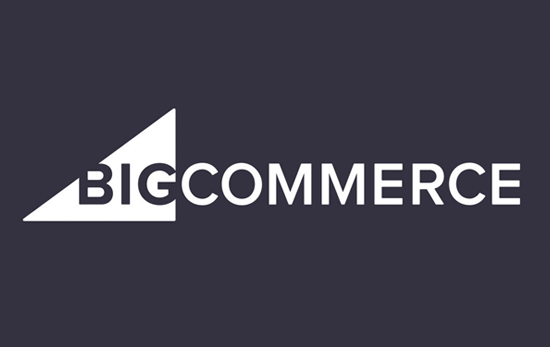
BigCommerce is one of the most powerful website builder platforms to build an online store. If you’re looking to create an eCommerce website that scales, then BigCommerce is the platform for you. It comes with all the essential features built-in, so you can keep your overhead low and margins high.
Pros
BigCommerce is a fully hosted eCommerce solution, so you don’t have to worry about website speed, security, or updates. They handle the server and technical side for you, so you can focus on growing your business.
Unlike other hosted eCommerce solutions, BigCommerce has a native integration with WordPress which allows you to leverage the flexibility of WordPress while taking advantage of the headless eCommerce power of BigCommerce. In simple terms, your website will be fast and secure no matter how much traffic you get.
BigCommerce integrates with all popular payment gateways including Stripe, PayPal, Apple Pay, Square, Amazon Pay, Visa Checkout, Chase Pay, Ayden, and more. Unlike Shopify, BigCommerce doesn’t charge a transaction fee for you to use these payment gateways.
You can start with one of their many pre-made website templates and customize it to match your needs using their easy drag & drop website builder.
BigCommerce comes with many features built-in to handle conversion rate optimization such as cart abandonment, improved product search, product reviews, coupons, and more.
The best part is their dashboard that lets you see the metrics to help you grow your business with confidence.
Cons
If you are just starting out, then you will find BigCommerce pricing a bit higher than other website builders in the list.
Since it’s a proprietary platform, migrating away from BigCommerce will be difficult.
Pricing
BigCommerce comes with a 15-day free trial for all plans. Their basic plans at $29.95 per month which comes with all the essential features that you will need. You can upgrade to the plus plan which costs $79.95 per month for additional conversion optimization features. Their pro plan costs $249.95 per month which has all the advanced features you may need.
The best part about BigCommerce when compared to Shopify and other third-party eCommerce platforms is that they have a seamless integration with WordPress which can be a huge plus if you want to combine the flexibility of WordPress with the power of BigCommerce.
4. Gator by HostGator

Gator is a brand new website builder by HostGator, one of the most popular web hosting provider in the world. The Gator builder is an all-in-one website building & hosting solution.
Pros
Gator is a fully hosted platform, so you don’t have to worry about the software, updates, or backups.
It has an intuitive website builder that lets you choose from 200+ professional website design templates. Each design comes with simple customization options that you can configure from the builder itself.
You can edit any item on a page with a simple point and click interface. You can also drag and drop commonly used items like images, videos, photo gallery, text, columns, maps, and contact forms.
You also have access to a built-in stock photo library, so you can find and add beautiful photos on your website.
All paid plans also include a free custom domain name for your website. The eCommerce plan also comes with the ability to set up an online store and sell your products online.
Since Gator is a paid product, they don’t sell your data or show any ads on your website.
Cons
Unlike some of the other options on the list, Gator doesn’t have a free plan. They also do not offer a free trial.
Like other proprietary builders in the list, you cannot hire a developer to help you significantly modify your website design or add new features to your website.
Pricing
Gator paid plans starts from $3.84 per month, $5.99 per month for premium, and $9.22 for eCommerce plan.
Gator can be used to build a small business website, a store with limited items, or a photo gallery. However, it is no match for the power of the most popular website builder, WordPress.
5. Shopify.com

Shopify is a website builder designed specifically for online stores and e-commerce websites. It powers more than half a million businesses with 1 million active users. Over 40 Billion dollars worth of products has been sold on Shopify’s platform.
Pros
Shopify is an all-in-one fully hosted solution, this means you don’t have to worry about managing software, installing updates, or keeping backups. Shopify does all that for you.
It offers integrated payment solution called Shopify Payments. You can also add third-party payment gateways to accept payments.
As an eCommerce website builder, Shopify comes with full inventory management, unlimited products, powerful stats, easy marketing solutions, all neatly wrapped under one roof. They have hundreds of designs to choose from, and you will never need to add code.
With its intuitive drag and drop interface, Shopify makes it super-easy to create a full-fledged e-commerce store. They also offer in-store POS, which allows you to sell products at your location while accepting all credit cards and taking advantage of Shopify’s inventory, shipping, marketing, and stats management tools.
You can even integrate Shopify into WordPress, allowing you to use both great solutions at the same time.
Cons
If you are just starting out, then you may find Shopify’s pricing a bit higher than some other website builders in this list.
If you ever want to move your website away from Shopify, you will find it quite difficult to do so.
Pricing
Shopify’s basic plan will cost you $29 per month. You can upgrade it to Shopify for $79 per month or Advanced Shopify for $299 per month. Shopify also offers a Shopify Lite plan for $9 per month, which basically allows you to add a buy button on any website.
If you want a hassle-free e-commerce website builder, then Shopify may be the perfect option for you.
6. Weebly.com

Weebly is an easy to use website builder with tons of great designs. It includes a beautifully crafted page builder which allows you to edit your website without learning any coding skills.
Pros
Weebly is a fully hosted platform, so you don’t need to install and manage any software. They take care of hosting your website and managing all the software that runs in the backend.
It comes with dozens of website designs to use as a starting point for your website. These gorgeous designs are fully editable using Weebly’s live page editor.
Weebly also comes with built-in support for e-commerce. This allows you to easily create an online store and start selling.
Each Weebly site comes with built-in features for contact forms, photo galleries, sliders, and more. This allows you to easily add features to your website without any complicated setup process.
Cons
Weebly is a fully hosted platform so you are locked to the features they offer. You cannot hire a developer or designer to add new functionality or feature to your website.
Weebly charges 3% transaction fees on every purchase made through your eCommerce store. You’ll need to upgrade to their business plan to avoid these additional fees.
Pricing
Weebly comes with a very basic free plan. Their paid plans start from $8 per month billed annually. The pro plan costs $12 per month, and it’s business plan costs $25 per month.
7. Duda.co

When the first iPhone made its mark on the world, Duda’s founders had an idea of how important mobile websites might become as a result. Founded in 2008, this company has specialized in, you guessed it, mobile websites.
However, Duda’s Responsive Website Builder, the product we are going to focus on in this review, is not primarily about mobile websites. Obviously, responsive websites are part of the deal, meaning your website visitors will see an optimized site whether they are looking at it on a computer, a tablet, or a smartphone. But Duda wants to be much more than just another website builder.
Not only is there a feature that will help you create multilingual websites, but there is also a unique website personalization tool. This enables you to send your visitors’ customized offers based, for example, on their browsing history or the city they live in.
All of this comes at a price, however – compared to their competitors, Duda’s Website Builder is not exactly cheap. Nevertheless, you can try it out risk-free – there’s a 30-day trial period, which is completely free and comes with no strings attached.
Pros
Great for multilingual websites
In our view, Duda has the most powerful system to create a website in different languages. A pity, blog articles, and e-commerce products currently can’t be translated.
Website Personalization Tools
This is surprisingly powerful! Send specific messages to your website visitors, for example, based on their location or on the time of the day.
Easy drag-and-drop editor
If you are looking for an intuitive way to create a website, Duda should be on your list.
Backup and Restore feature
Want to carry out a major change to your website? Simply create a backup and restore the site if something goes wrong.
Cons
Quite expensive
Not only is there no real free plan, but Duda’s paid plans are also starting at a much higher level than most of their competitor’s. Please note that you can get pretty much the same product (a white-label version) from 1&1 Ionos at a lower price.
No app store available
In comparison to Wix or Weebly, there is no App Store with additional features. You can still add new functionalities like live chat or a booking feature, but that has to be done in a manual way.
8. GoDaddy Website Builder
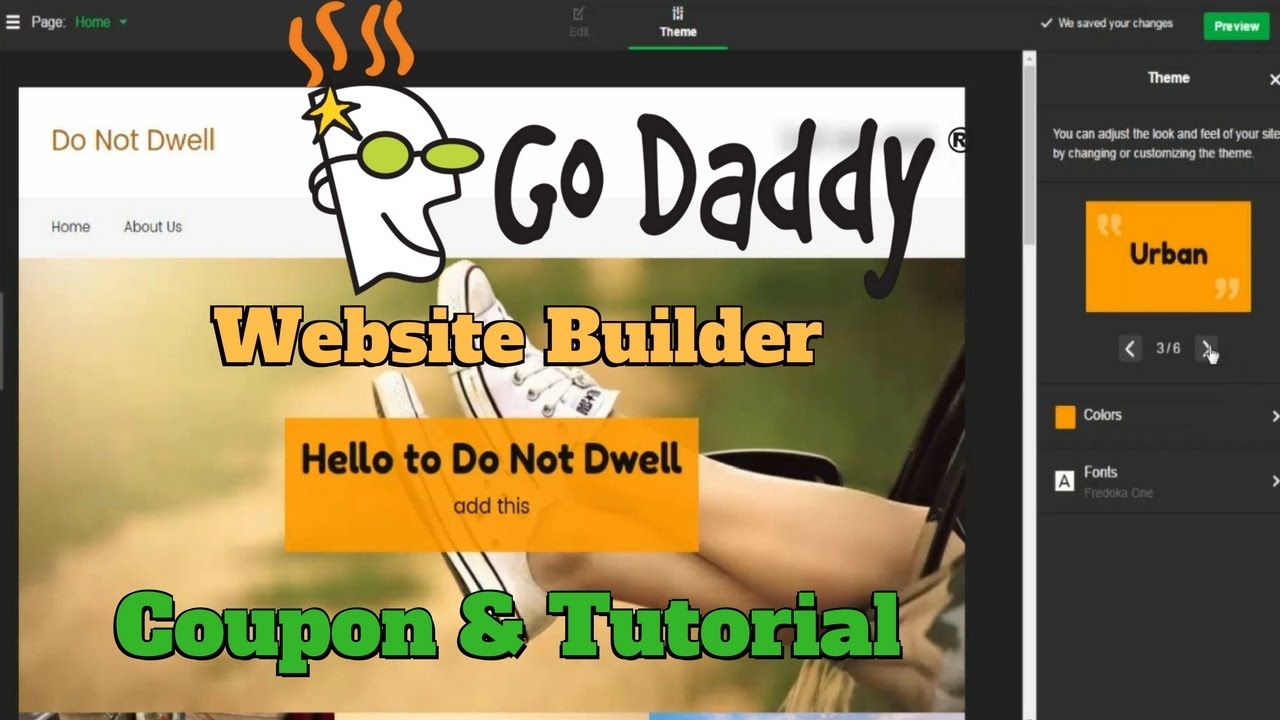
GoDaddy is one of the largest domain names and hosting service providers in the world. They offer a simple and elegant website builder complete with hosting included.
Pros
GoDaddy Website Builder is a simple and easy tool to create professional looking websites. It comes pre-loaded with several ready to use blocks that you can drag and drop to build different layouts.
It also has an integrated photo library with professional images from Getty Photography that you can use on your website. You can also upload your own photos and create image galleries.
GoDaddy website builder works on smaller screens too. This allows you to work on your website on the go using your mobile phone or tablet.
Cons
It is not as feature rich and flexible as most other website builders on this list. It offers a limited set of features with fewer design options.
It is quite difficult to move your website from GoDaddy Website Builder to WordPress.
Pricing
Personal plan costs $5.99/month, the business plan for $9.99/month, and business plus plan for $14.99/month. All plans are billed annually.
GoDaddy Website Builder can be used for a basic website with a few pages. However, it is not a good choice to build content-rich websites.
9. WordPress.com
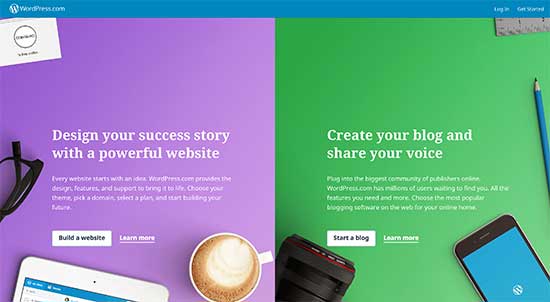
WordPress.com is a blog and website hosting service run by Automattic. It is created by Matt Mullenweg, the co-founder of WordPress open source software, hence the name WordPress.com.
However, WordPress.com is not the same as self-hosted WordPress.org.
Pros
WordPress.com is a website hosting service. Built on top of the same WordPress software but with a totally custom user experience. You don’t have to worry about the software and backups as WordPress.com takes care of it.
Their free and paid plans have a different set of features. All plans allow users to choose from hundreds of free and paid WordPress themes. You can then use the built-in customizer to add your site title, use widgets, add navigation menus, and so on.
It doesn’t offer the same drag and drop functionality of other website builders. However, you can easily customize designs to a certain extent.
Cons
You cannot install custom plugins or themes unless you upgrade to their business plan.
Premium and lower plans do not have e-commerce features or third-party ad network support. With the business plan, you can use WooCommerce and third-party ad networks. However, you will still have to follow WordPress.com’s terms and conditions.
Pricing
The basic plan is free but is extremely limited. Their personal plan starts with $4 per month billed annually and includes a custom domain. Premium plan costs $8.25 per month billed annually and it gives you the ability to monetize your site and advanced design customization. Business plan costs $24.92 per month billed annually, and it gives you the ability to have E-commerce and custom plugins.
10. BoldGrid
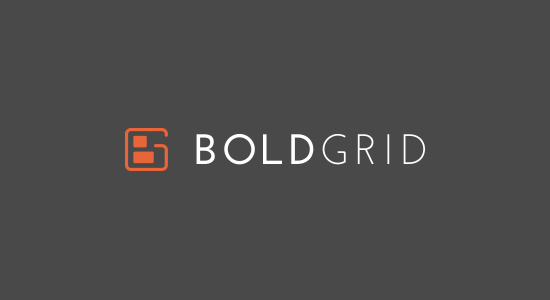
BoldGrid is a new kind of website builder that is built on top of WordPress. It is available as a standalone WordPress plugin as well as a fully hosted website builder suite.
Pros
BoldGrid is built on top of WordPress, so you get full advantage of WordPress with the customized user experience. BoldGrid’s website builder allows you to choose a professional design from their gallery of themes.
After that, you can customize those designs with a drag and drop customizer. You can point and click on any item in the preview section to edit its properties. You can change colors, fonts, layouts, navigation menus, and widgets with ease.
Need a staging website? BoldGrid creates one for you with a single click. This allows you to test out your new designs, layouts, plugins, and themes before making it live for everyone to see.
It also comes with a full WYSIWYG page editor. No more guesswork when editing your pages in WordPress. You’ll get exactly what you see on your page editor window. You can also use GridBlocks to simply drag and drop elements to your page and build your own layouts from scratch.
All BoldGrid themes are ready for WooCommerce. This allows you to easily create a storefront using BoldGrid’s drag and drop builder.
Cons
BoldGrid runs on top of WordPress, so you will still need a self-hosted WordPress.org website to use it.
But the good part is backups are included through BoldGrid backups, so you don’t have to worry about that.
Pricing
BoldGrid basic plugin is available as a free download. You’ll need a WordPress hosting account and a domain name to install and use it. We recommend using InMotion Hosting because they are an official BoldGrid hosting provider.
This means you can easily setup BoldGrid with a few clicks on InMotion Hosting’s platform.
If you want to use WordPress but with the ease of hosted drag and drop website builders, then BoldGrid would be perfect for you.
11. 1&1 IONOS Website Builder

1&1 Website Builder is a premium website builder designed specifically for small businesses, individuals, and starter websites.
Pros
The 1&1 IONOS Website builder is a fully-hosted solution to easily create a website in minutes. It comes with hundreds of professionally designed templates to create fully functional business websites.
All templates are mobile friendly out of the box and your website will look great on all devices.
Select your industry to get a template that already contains the content matching your needs. You can tweak it as little or as much you like with user-friendly interface.
Each plan comes with a free domain name and your own branded email addresses. Support is available 24 / 7 via phone, live chat, or email.
Cons
There are no integrations or third-party extensions that you can install to your website for new features.
The website builder and online store builder are two separate products. If you want to start an online store, then you need to sign up for their online store builder.
Pricing
They are running a $1 for six months offer on all their plans. Regular prices start from $7 per month (Essential), $10 per month (Business), and $20 per month (Pro).
12. Ucraft

Ucraft offers an easy to use website builder for blogs and businesses wanting to add a shopping cart and start selling products.
Pros
Ucraft comes with a drag and drop website builder with dozens of templates to choose from. All website designs are fully mobile friendly. Getting started with a basic website takes only a few minutes and requires no technical skills.
They offer a limited free plan and let you add your own custom domain name. All paid plans include one free domain registration.
All paid plans also include eCommerce features with more than 70 payment methods to accept online payments. Other notable features include on-site search, Google Fonts, multi-currency stores, multilingual website, discount coupons, and more.
Ucraft also has integrations available for several third-party tools and services like Google Analytics, Live Chat, Zendesk, Intercom, and more.
Cons
There are enough integrations available but you are only limited to those currently available.
The pro website plan lets you add only 50 products at a time. You will need the Pro Shop plan to add more products.
Pricing
Ucraft offers a limited free plan with the ability to connect your own domain name. Their paid plans start from $10 per month for Pro Website, $21 per month for Pro Shop, $39 per month for BigCommerce.
13. Sitebuilder.com
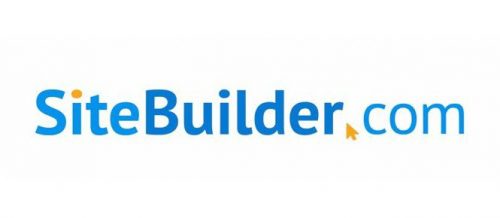
SiteBuilder’s drag-and-drop editor will get your basic website out of the blocks fast. – but creating very basic sites is really all it’s suitable for. If you want anything more, SiteBuilder won’t be powerful enough for you.
Here at Website Builder Expert, we want to give you the best and most accurate information we can. That’s why we spend hours researching every single builder we review.
SiteBuilder scored well for its ease of use but struggled to keep up with its competitors in all other areas, including features and value for money. As a result, it came in as the lowest scoring website builder, achieving only 3.6 stars out of five.
So why did it score so poorly? We look at all kinds of factors in our research, from the value for money to customer support; SiteBuilder covers the basics, but it lacks the high-quality features and design customizability that enable it to support a more developed website.
In truth, there are other builders on the market which do a much better job.
While SiteBuilder’s simplicity may be fine for you right now, it just doesn’t have the juice to power and scale your website in the long-term. It’s like relying on a scooter instead of the family car.
Building your website isn’t a one-off project. It’s just the beginning.
Pros
Ease of use is SiteBuilder’s number one priority, and the website builder scored 4.3 stars out of five in our ease of use testing. This score reflects how SiteBuilder delivers in the early stages of website building. But, the more our users wanted to customize their pages, the more frustrated they grew with its restrictions.
SiteBuilder supports Social Login, which means you can sign up with just one click using your Google or Facebook account. This saves a surprising amount of time and hassle!
Then it’s straight down to business. You must pick a domain (for example, www.mybeautifulwebsite.com), choose your plan, and enter your payment details. Pay up front whether you choose a monthly, yearly or two-year plan. Once you’ve confirmed your purchase, you can get building!
The editor kicks off with a brief ‘guided tour’. Staring at a blank screen or an uncustomized template can be intimidating, so the tour helps to get you started.
SiteBuilder’s guided tour introduces all the editor’s tools and helps you get started
Basic template tweaks: very easy
SiteBuilder has pre-filled templates for you to edit. This guides your design, gives you a layout to work with and makes it easy to visualize how your site will look once it’s live.
SiteBuilder’s drag-and-drop controls give you easy control over basic template tweaks.
It’s not the ‘pure drag-and-drop’ of Wix – you can’t move anything anywhere – but you do get a straightforward editor that doesn’t require any coding knowledge.
Adding photos is a breeze, as long as you upload them from your computer or use SiteBuilder’s large library of free stock images.
All your uploaded snaps are stored in your SiteBuilder file manager, which means you won’t have to upload the same photo twice.
Cons
It’s easy enough to add pages, sections, and extra features to your SiteBuilder site by dragging them onto the template.
The trouble comes when you want to customize and rearrange them.
Sections have to be arranged one after the other, and can’t be laid out next to each other instead. This really reduces your layout choices.
What’s more, you can’t move features and sections between pages. For example, if you have a customized map on your homepage, you can’t move it to a new page later on.
To use an analogy, imagine you’re hanging pictures in your new home. In time, you’re going to want to move pictures around your house – not just around the same wall!
Pricing
The half-price offer only applies to your initial ‘payment term’ (month, year or two years). Then you’ll be automatically billed the full rate – as much as $442.80 for two years of SiteBuilder eCommerce.
Intro discounts are nice, but your website builder is a long-term relationship. Don’t be distracted by the 50% off deal – you need to budget for the long haul, and we don’t think SiteBuilder is worth it in the long term.
As with most other website builders, you save money overall by paying for a year or two up front.
14. Site123.com

There are seemingly thousands of different ways to build a website today. SITE123 is one of the best-known brands in the website builder product type. Back in the day, the only way people could have a website was by hiring a programming professional to write the source code.
This would take quite some time, starting with researching for a professional, then getting in touch with him, explaining the needs, learning how it could be done on his end, etc. And what would take the most time of all was the actual professional’s work in building the website itself.
The internet was in its beginnings and even the most experienced professionals would face many issues when programming. The code languages were not as bold as they are today. They were still under development and that was a major problem.
Luckily, you do not have to face all the trouble of learning these programming languages or even contacting a programmer to do so. As the internet evolved, so did the tools available out there. And many of them are set to save you lots of time in these kinds of processes. In the specific operation of building a website, there are many options available, and among them is SITE123. It is here to change everything you have known about website builders.
Pros
FANTASTIC SEO results – SITE123 Built with an amazing code that delivers great SEO results for any website.
Responsive Web Design – with SITE123 your website look good on all devices (desktops, tablets, and phones).
Ready-made Styles and Layouts – You can edit your website’s layout, setting up different kinds of menus… the most important thing is that you can change your website’s layout as many time as you want and your site still have a professional look and feel.
56 different languages to build your website – It’s amazing! You can build your website in almost any language you want.
Cons
No access to the source code – you can’t add any code to your website for whatever reasons you may have.
Visible advertisements on the free plan – There are SITE123 ads on the free plan. To get rid of them, you just need to upgrade your account.
Not designed to handle complex e-commerce needs – To be fair, SITE123 does have better e-commerce tools than most standard website builders, and it makes it possible to work with small and mid-sized online stores but not with big e-commerce websites.
No user access area – they do not provide a user access area yet
Pricing
Well for starters, Site123 do offer a free plan. This gives you the ability to build and publish as many websites as you want, 500MB storage, and 1GB bandwidth. Not bad.
The problems with this are that 500MB is too small if you want videos on your site and the small amount of bandwidth can limit your content and traffic.
On top of that, your website will be stamped with Site123 branding, both in your subdomain and on the footer of all your site’s pages.
If you want your website to be taken seriously, investing in a premium plan is a smart idea. Which plan depends on your needs and the image below breaks down exactly what each one offers you.
15. Web.com

Web com is a powerful web hosting company that also provides a lot of other value to its customers. It’s definitely one of the best choices for someone who is just starting out and has no idea how to build or manage a website. Web com provides a lot of support for its customers. To learn more about what this company offers, you should check out as many web com reviews as you find.
Pros
There are so many great things to say about this company but I have to start somewhere so I’ll start with customer service. This is one of the best things about web com. A lot of companies promise to provide you with a dedicated customer service team but web com really delivers.
That great customer service includes minimal wait times and friendly representatives. You can see how that devotion to their customers pays off in the many positive web com customer reviews.
Site Building Tools
Beyond that, your web hosting plan will also come with an advanced suite of site building tools that make it as easy as possible to build your website. The Neo website builder is included at no extra cost! It’s easy to change the design or color schemes as well as add and edit content.
WordPress Compatibility
But if you’re not comfortable learning a new set of tools, you can also use their WordPress content management system or even just pay an additional fee to have a completely custom website built for you. And it does not get any easier than just paying someone else to do it for you!
Helpful Resources
So for those who want as much support as possible, web com is an excellent choice. They also have their own YouTube channel full of helpful, informative, and inspiring videos.
Great Shared Server Plan
At this point, you might be asking yourself how their actual hosting plans stand up to the competition. They provide 3 levels of plans that are very well balanced between affordable price and helpful features.
You can find the specifics about each of these 3 plans in the product line section below. But, basically, the prices range from about $6 per month to $10 per month so even if you want to “splurge” on the premium plan, you are still paying an extremely low price.
Great Uptime
Another important area where web com flexes its muscle is in uptime. Uptime refers to the percentage of time that your website is going to actually be up and running. All servers can experience a variety of troubles that cause a site to crash.
But if your site is being hosted on a server that crashes often, what’s the point of even having a site up at all? Web com has a 99.99% uptime which is the highest you can get in the market. That means that you can rest assured your website is up and running whenever and whatever your visitors want to check out.
Cons
For all that Web.com has to offer, there are some significant contenders that might knock it a few pegs down for some customers.
Bad Live Chat
One issue that they do need to work on is the live chat feature on their website. If you really want to experience the great customer service that they can offer, you are definitely better off calling them up on the phone.
The issues with live chat have nothing to do with the representatives, it’s the feature itself that has a bad habit of experiencing glitches.
Lack of Scalability
A potentially more serious drawback is the lack of dedicated servers and virtual private servers (VPS). All of their plans run on shared servers which works perfectly fine for a website with only limited needs. But if you expect your website to grow beyond those limits, you’re going to need a more powerful server to host it so that you can ensure it’s working at maximum capacity all the time.
Because web com does not have these more powerful services, you might be left in the lurch once your site gets too big. You can transfer your website over to another hosting service that has the powerful servers you need. But transferring a website is not an easy thing to do. So you will need to keep that potential future headache in mind when you make your choice.
Confusing Interface
Even if you aren’t ready to think that far into the future yet, you might find yourself a little disappointed with the user interface which can be a little confusing for some. And while it does offer a WordPress content management system, it is only a limited version of the full WordPress toolset.
So if you are hoping to use WordPress, you might feel like you’re getting cheated out of some important tools and customization options.
Pricing
Web.com pricing for the DIY builder actually starts out affordable and competitive, but then skyrockets to ridiculous rates after 30 days. For example, the introductory Web.com cost for using the website builder starts at just $1.95. But 4 weeks later, the rate jumps to $22.95 per month. That’s much higher than what more modern and feature-rich web builders charge for similar plans and better software. This could explain all of the Web.com reviews with complaints.
The Web.com costs for other plans are similar, with very low rates for the first month, followed by an increase to an amount that’s unreasonably high. Compare Web.com monthly costs to rates from other popular web builders, and you won’t have any problem finding a better deal.
The cost of a custom-built website from Web.com starts at $114.95 per month after the first 30 days. And that’s just for the base plan. If you have greater needs, that cost could increase substantially.
16. Jimdo.com
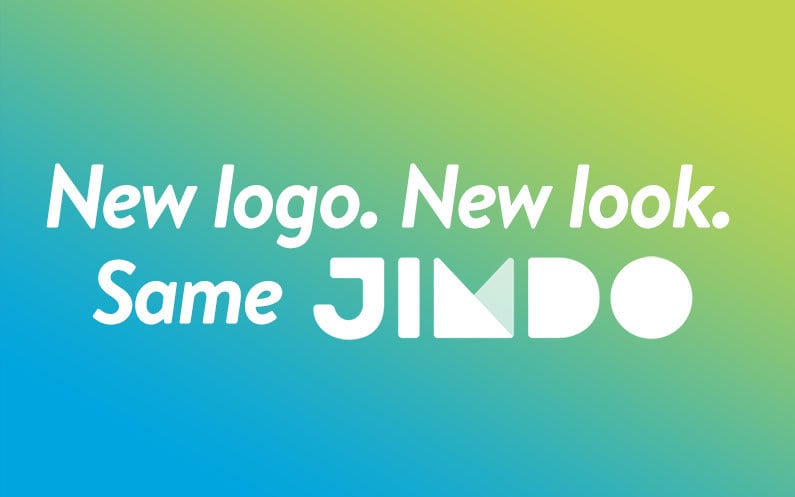
The Creator is Jimdo’s main platform. If you’re familiar with website builders, it’ll be similar to what you’ve seen before.
Jimdo Creator is a fully fledged editing interface. You can add in your own content, resize things, and drag elements into different positions.
Jimdo Dolphin is an ADI (artificial design intelligence) solution. All you have to do is answer some questions about the type of website you’d like, and Jimdo will create the website for you!
Both are fantastic ways to build a website but cater to very different needs.
Jimdo Creator is for those who want to be in control; you get a decent say over your site’s layout, aesthetic and content.
Jimdo Dolphin is a lot quicker. You can pull things from social media or existing websites onto your new site instantly. It is limited, however, in terms of how much you can edit.
Pros
Here’s what we found to be the pros of using Jimdo — not just in comparison to popular website builders like Weebly and Wix, but as an overall website solution.
Straightforward Sign-Up Process
One of Jimdo’s best features is how quickly you can get up and running. Signing up for the platform is a simple process that involves creating an account, verifying your details through your email, and then choosing which website builder you’d like to use.
One thing to note here — if you’re looking for the easiest, most hands-off way to create your website, the AI web designer is probably your best option. It goes through a series of questions and then creates your website for you, but follows the process up with a detailed, step-by-step tutorial of how to customize your base template. It’s perfect for DIYers who are brand new to building a website.
Simplicity
Jimdo is also seriously simple to use, which makes it hard to mess up your website design. Once you choose a template (or have one created for you with the AI builder), you’re pretty much locked into the layout provided.
The DIY website builder is drag and drop, but it has its limitation — you can add new elements to the page, but only within the template structure you’re already given (and limited to the elements provided — but more on that in a bit).
And if you’re using the AI builder, you’re given even more structure (with that comes limitations, but again — we’ll get there). With this option, you have less drag-and-drop and more choose from what they give you. You can customize the styles on the page (like fonts and colors), and you can add premade sections and blocks, but you don’t get the ability to add elements willy nilly.
The whole setup is like painting by numbers.
There are obvious drawbacks to this setup, which I will cover in the disadvantages, but it is a real advantage to having limited but accessible design options.
Website Builder Options
Part of what makes Jimdo unique is they offer two design routes — you can either use their AI website builder, which gathers information for you and creates a template based on your answers to questions like “what is your website for?” and “what is your preferred design style?”. From there, Jimdo walks you through a step-by-step tutorial for customizing your assigned website template.
Or, you can take the DIY-approach. In this approach, you select your industry and are provided with a selection of website templates to choose from. Then, you can customize the template with Jimdo’s drag and drop editor. This method is slightly more advanced but still straightforward and controlled enough to keep newbies in check.
One thing to note if you’re going the DIY route — I found that your industry selection doesn’t matter. I was given the same templates to choose from whether I chose business or healthcare or skipped the industry question altogether.
Note: When using Jimdo for the purposes of this review, I created an additional Jimdo account through a new browser window to go through the sign-up process again and was automatically assigned to the AI website builder. Of course, there’s always a chance for user error, but as a brand new, inexperienced customer to the platform… it was confusing. It’s a potential con for using the platform, but not because of the actual user experience of the builder — it’s just a bit confusing and unclear when signing up.
Some Product Integration
Another benefit of Jimdo is their product integrations. Aside from offering DNS and hosting services, Jimdo also offers e-commerce functionality with their paid plan (one thing to note — in order to get e-commerce functionality, you do need to choose between the two higher-priced tiers.)
We’ll talk more about pricing in a moment, but just know that you could get the same (or better) functionality for less elsewhere.
European Presence
For U.S. users, this isn’t really a pro or a con, but for those in the EU, Jimdo’s European presence makes it a strong competitor.
Jimdo is a German company and operates data centers in Europe. As a European company, this means that Jimdo’s data protection and privacy standards are much stronger thanks to the EU’s new laws on data and privacy.
Additionally, if you are a US company who needs an EU microsite for an EU audience, Jimdo makes GDPR a bit easier than some website builders focused on the US market.
Cons
But of course, no review would be complete without looking at the downsides. Every piece of software will have complaints. Let’s look at 3 specific cons I found.
Plans + Pricing
Jimdo’s pricing and plan structure are a bit confusing. When first signing up, You can see that paid plans start at $9/month paid annually, which includes your own domain, free hosting but only a 10-page limit.
However, if you choose a free plan and want to upgrade (which I did), the pricing options appear differently from inside your account.
Aside from the convoluted information, the actual competitiveness of the plans and pricing structure leaves something to be desired (err, actually a *lot* to be desired).
Compared to competitors like Wix, Gator, and Weebly, Jimdo is more expensive and has more restrictive limits.
Their free plan doesn’t even offer mobile-friendly site design (a pretty standard design feature in today’s world), and you can’t get basic Search Engine Optimization features until their mid-tier plans. Even the mid-tier Grow plans have hard limits on the number of pages and on bandwidth usage (which to me seems like a double-limit). And I’m all for over-delivering on low expectations, but the support options are seriously deficient.
Plus, there’s no option to pay monthly, so you’re locked in for a year.
In short, using Jimdo is going to be more expensive than going with a competitor and more restrictive due to the design and technical limitations (more on that shortly), regardless of whether you’re using it for a year or just a few months.
Limited Feature Set – Design
With any technology product, there is almost always a trade-off between convenience and control (think Android vs. iOS)
And you can really see this trade-off with the Jimdo website builder. The convenience of their design setup is great. It’s straightforward, fast, and not confusing at all. It puts your focus solely on getting your content onto the premade template and adding additional elements within the template that may enhance your design/user experience.
However, if you want to go anywhere beyond the basics of design, you are limited with Jimdo. In the DIY website builder, you can edit the color, the font, and the general ‘feel’ of the design. You can also choose from a few variations of the template, which essentially just have different navigation styles.
With pages, you can delete and add sections and move them around, but you cannot add a page unless you add it to the navigation. You can alter the layout, but you certainly cannot edit the CSS, much less add any other design element outside of the pieces they give you.
And if you’re using the AI website builder, you’re limited even further. As I mentioned above, you can add sections and elements based on pre-built blocks, but that’s about it.
The best way to describe it is a ‘paint-by-numbers’ set up. It’s great to have the basics, but if you want to do anything extra or outside of bounds, then you’re out of luck.
If your website is growing, or becoming a bigger part of your business, the design limitations can be crippling. And unlike other website builders that attempt to solve this issue through apps, extensions, or access to the website code or HTML, there is no outlet for a Jimdo website builder website.
Limited Feature Set – Technical
The limitations on design also bleed over into technical limitations.
Technical limitations are features that you don’t know that you want until you want them, and then you find out you can’t have them.
These are things like integrations with Facebook, Pinterest, Twitter, Google Ads, social sharing options, blogging, and a whole host of every intermediate to advanced marketing tools on the internet. Now, as I mentioned above, Jimdo does give some integrations, like e-commerce and DNS/hosting services. However, there are a ton of technical features that Jimdo doesn’t provide or that are extremely limited.
For example, let’s look at Jimdo’s SEO features. I can edit the page title and description for individual pages, as well as assign noindex, nofollow, or noarchive settings. But aside from that, I’m pretty locked into what I have aside from editing the HTML in text sections on the page. There are no options for sitemaps, Schema, Open Graph settings – much less highly advanced options.
17. Squarespace.com
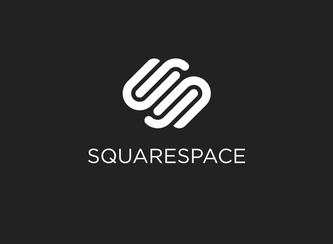
Squarespace is a popular fully hosted website builder known for its great designs and ease of use.
Pros
Squarespace comes with enterprise-grade infrastructure for hosting your website. This secure and robust platform allows you to focus on growing your business without worrying about hosting.
Squarespace includes tons of website designs to get started. All of these designs are fully ready for all types of content. They are fully editable, and Squarespace even allows you to use multiple templates for the same website at once.
Adding content to your website is very easy on Squarespace. Just point anywhere on your website and start typing. You can easily drag and drop items on pages to create your own layouts in minutes.
Squarespace also has an e-commerce plan which allows you to add an online store to your website. It offers a nice interface to manage your products, inventory, orders, coupon discounts, and more.
Cons
Squarespace offers limited integrations with third-party service which can be a hurdle in growing your business.
Their e-commerce plans only allow Stripe, Apple Pay, and PayPal for payment processing. You cannot add additional payment gateways.
Pricing
Squarespace websites start from $12 per month and $18 per month. Their online stores start from $26 and $40 per month.
Squarespace is a beautifully designed platform that offers very easy to use features. It can be perfect if you just want to quickly build a website.
18. Strikingly.com
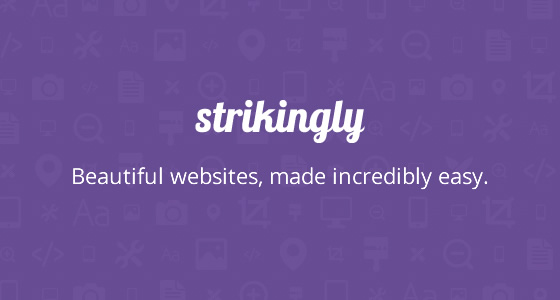
While Strikingly is not specifically geared towards building mobile sites, it does allow you to easily build responsive websites that can automatically adapt to different screen sizes, from mobile phones to tablets to PCs. What’s more, the sites that you can create with it are single page websites. Basically, these are simple, minimalistic websites that house all of their content in just one page, which is achieved by a layout where vertical scrolling is highly utilized. This layout style, as you can imagine, is perfect for mobile devices as it lends quite well to one hand operation. It’s simplicity makes it a worthy recommend, but it also might be a bit too simple for some.
Pros
Ease of Use: – Keeping very much in line with their simple approach, building a mobile website with Strikingly is incredibly easy and straightforward. Thanks to a ridiculously simple and intuitive editor, you can accomplish everything that you need on just one screen. You do not even need to have any coding or design experience whatsoever; you can click on anything to edit, and publish instantly. Moreover, you can choose from a host of beautiful, professional looking templates so you won’t ever to worry about not having any know how in web design.
Mobile Optimized Out of the Box: – Even if Strikingly is technically not a mobile website builder, at least, not entirely, all of the singe page websites that you can create here are guaranteed to display properly and perfectly on any screen size, whether its on PC or mobile phone. This is thanks to the fact that each and every one of the available templates are responsive, which means that they can automatically adjust to whatever screen size your website is currently being viewed on.
Vast Knowledge Base: – Thanks to an impressively vast knowledge base, you definitely won’t get lost or confused with regards to Strikingly’s service. With over 160 articles to peruse, just about any of your questions are guaranteed to be addressed in their knowledgebase.
Cons
Simplicity: – While some people will definitely fall in love with Strikingly’s simplicity, some might prefer a more advanced approach. For example, some may want to create mobile websites that are content-heavy and, in this case, single page sites are not the way to go. Because of the inherent limitations that websites with only one page possess, they are only best suited for online business cards, simple portfolios, presentations, and the like.
Branding is not Removed From All Paid Plans: – While this is not really that big of a deal, some users may still take issue with the fact that the Strikingly branding is still present in one of the two paid plans. Ideally, much like what other services do with advertisements, the branding should only be present in the free plan and should not be of any inconvenience to paying users.
One-Page Websites May Not Be Advisable for SEO: – Despite the fact that Strikingly websites are search engine optimized, you will always be limited to one page you can link to, which means that you will only ever have one set of meta tags you can specify (unless you go for the higher priced Pro, which offers multiple pages). While doable, this makes SEO a bit tricky, especially for this mobile website builder provider’s intended audience.
Pricing
Strikingly has three plans that you can subscribe to, with each one catering to different budgets and needs. To start things off, they are offering a Free plan that, just as the name implies, do not require a monthly fee. The great thing about this plan is the fact that it will not expire after a certain time; it is free, forever! In addition, it will give you a Strikingly.com domain, unlimited free sites, and 5GB of bandwidth per month.
Next, the Limited plan goes for $12 per month and will give you the ability to connect your own domain, 2 Limited sites, unlimited free sites, and 50GB of bandwidth per month. You can also choose to prepay for one or two years, which will grant you significant discounts. For the yearly payment method, the Limited plan will cost you $8 per month, billed annually, while the 2 years method will knock the price down to $7 per month, billed every 2 years. You will also get a free domain and email for one or two years, depending on which payment method you chose.
Finally, the Pro plan will cost you $20 per month, $16 per month (billed yearly), or $14 per month (billed every two years). This plan will give you the ability to connect your own domain, 3 Pro sites, unlimited free sites, unlimited bandwidth, access to the Strikingly app store, mobile action buttons like click-to-call, maps, and email, the ability to embed HTML/CSS/Javascript code, the ability to remove the Strikingly branding, password protection for your site, and advanced image editing features. You can also get a free domain and email for one or two years if you choose to prepay annually or every 2 years. Interestingly, this plan also allows you to create up to 10 pages, which should satisfy those who feel a bit limited by single page site.
AbcSubmit – drawing website builder tool
What you can do with AbcSubmit’s drag and drop website builder and form builder:
- draw and wire your web forms and online shop with other apps using our 3-rd party apps or with Zapier platform with more than 1000 existent apps.
- accept payments online with PayPal, Stripe, Braintree, Cash on delivery and so on.
- create an online calendar for your appointments scheduling.
- create advanced workflows for your forms and eCommerce website.
- create websites using drawing mode and drag and drop.